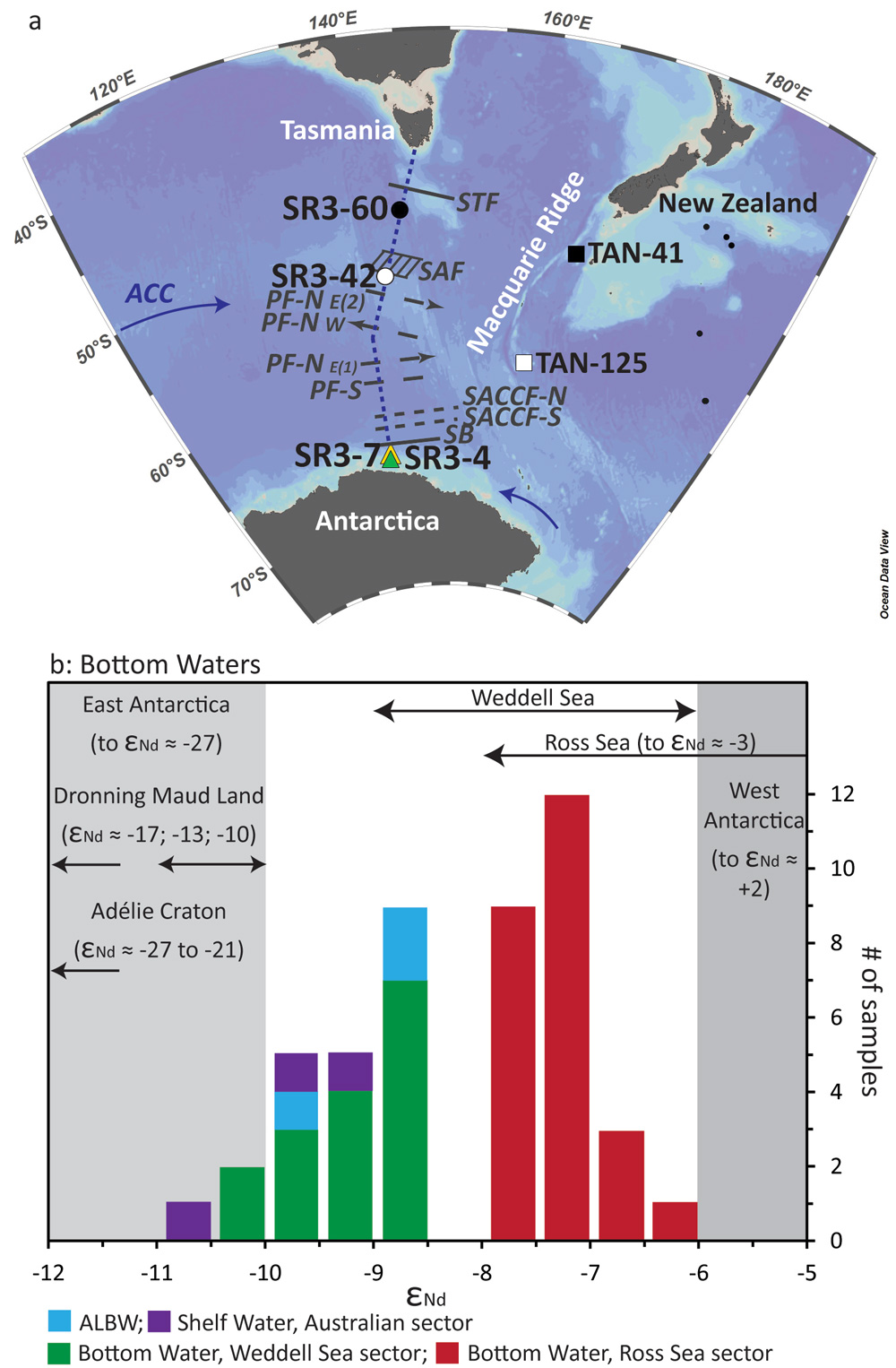Local geologies imprint the Antarctic Bottom Water neodymium isotopic signatures
Dissolved neodymium (Nd) isotopes and concentrations were measured at six stations in the Australian sector of the Southern Ocean, targeting the study of the Adelie Land Bottom Water (ALBW), a variety of Antarctic Bottom Water formed off the Adélie Land coast of East Antarctica. Lambelet and co-authors (2018, see reference below) present the first dissolved neodymium (Nd) isotope and concentration measurements for ALBW. Summertime ALBW Nd isotopic composition display εNd values of -8.9 ± 1.0, while Adélie Land Shelf Water, the precursor water mass for wintertime ALBW, displays the most negative Nd fingerprint observed around Antarctica so far (εNd = -9.9). The summertime signature of ALBW is distinct from Ross Sea Bottom Water and similar to Weddell Sea Bottom Water. This underlines that Antarctic Bottom waters are not uniform around the continent and carry Nd isotope fingerprints characteristic of their formation area (local geology). This makes these water masses traceable back in time and is hence important for paleoceanography and for the study of past climate change.

Figures: a) Map of the sampling area, with the major fronts crossing the section at the time of the survey depicted in dark grey. b) Histogram representing εNd for bottom waters in the different sector of the Southern Ocean, underlining that Antarctic Bottom waters are not uniform around the continent and carry Nd isotope fingerprints characteristic of their formation area. Click here to view the figure larger.
Reference:
Lambelet, M., van de Flierdt, T., Butler, E. C. V., Bowie, A. R., Rintoul, S. R., Watson, R. J., Remenyi, T., Lannuzel, D., Warner, M., Robinson, L. F., Bostock, H. C., Bradtmiller, L. I. (2018). The Neodymium Isotope Fingerprint of Adélie Coast Bottom Water. Geophysical Research Letters. http://doi.org/10.1029/2018GL080074
